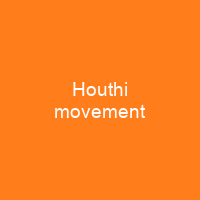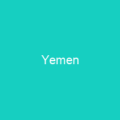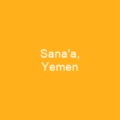The Rise of the Houthi Movement: A Complex Web of Ideology and Conflict
Imagine a group that started as a small theological movement in Yemen, only to become a powerful force shaping the country’s political landscape. The Houthis, also known as Ansar Allah, have evolved from a moderate Zaydi Shia organization into a complex and controversial entity with far-reaching implications for regional stability.
The Genesis of the Houthi Movement
Back in the 1990s, Hussein al-Houthi, a young man from Saada, began preaching against what he saw as corruption and foreign influence. His movement, initially called ‘the Believing Youth’ (BY), aimed to revive Zaydi Shia Islam. But it wasn’t long before Hussein’s rhetoric took on a more radical tone, with slogans like ‘Death to America, Death to Israel’ becoming commonplace.
From Insurgency to Control
The Houthi insurgency began in 2004 when Hussein al-Houthi was killed by government forces. This event sparked widespread protests and the rise of his brother, Abdul Malik al-Houthi, who continued the fight. By 2014, they had taken control of Sanaa, leading to a Saudi-led military intervention that continues to this day.
Complex Ideology and Relationships
The Houthi movement is a fascinating blend of religious, nationalistic, and populist ideologies. They claim to fight against Salafism’s expansion while also recruiting Sunnis on various themes such as Muslim unity. However, their relationship with the Sunni community is often strained, with reports of discrimination and even violence.
Regional Alliances and Conflicts
The Houthi movement has garnered support from Iran but denies direct control or command from Tehran. They have also received weapons and training from North Korea and Russia, further complicating their international relations. This mix of alliances and conflicts makes the Houthi movement a formidable player in regional politics.
Human Rights Concerns
The UN has documented numerous human rights violations by the Houthis, including the use of child soldiers, torture, and forced marriage. Their treatment of women is particularly concerning, with reports of sexual violence and forced prostitution at their detention centers.
Propaganda and Media Influence
The Houthi movement has a sophisticated propaganda machine that includes 25 print and electronic publications, as well as the use of zamil poetry to spread their message. They have also been accused of using civilians as human shields and interfering with humanitarian operations.
Conclusion: A Multifaceted Entity
The Houthi movement is a multifaceted entity that has evolved from a small theological group into a powerful political force in Yemen. Their complex ideology, regional alliances, and controversial actions make them a significant player in the ongoing conflict in Yemen. As their influence continues to grow, so too does the need for understanding and dialogue.

You want to know more about Houthi movement?
This page is based on the article Houthi movement published in Wikipedia (retrieved on December 31, 2024) and was automatically summarized using artificial intelligence.







